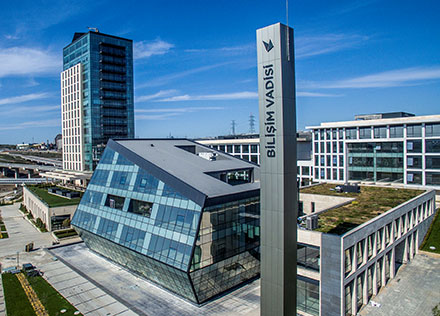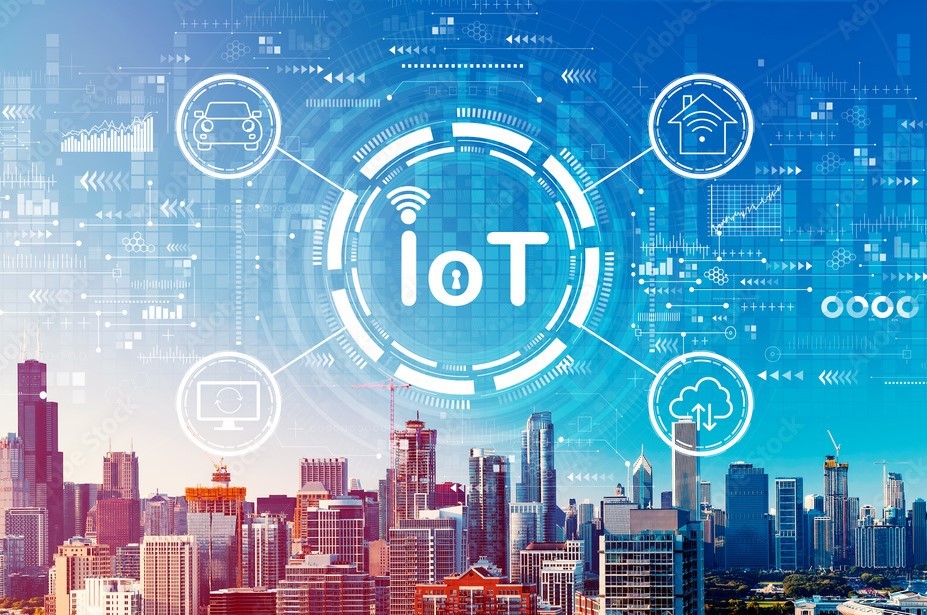What is IoT, How does it work, What does the Internet of Things do, What are its advantages and disadvantages? Click Now for Details!
IoT stands out as an area of technology that transforms our daily lives, industries and cities. It is a system where objects (devices, vehicles, home appliances, etc.) can connect to the internet and exchange data. These objects communicate and exchange information with each other through sensors, software and internet connectivity. For example, smart thermostats detect the home temperature and allow the user to change the settings of the thermostat by remote access via mobile phone.
The working principle of IoT is about objects sensing changes in their environment through sensors and processing this information to take appropriate actions. These sensors can measure various physical properties such as light, temperature, humidity, movement. The measured data is then analyzed and decisions are made to manage the interaction on the object as needed. For example, in a smart agriculture application, soil moisture sensors measure the moisture level of the soil and this data is taken by an irrigation system to determine the need for watering the plants.
What is IoT?
IoT stands for "Internet of Things". It is a technology that enables internet-connected devices and objects to communicate and exchange data with each other. These objects collect, process and share data through sensors and internet connectivity. It is often used to facilitate everyday life and optimize industrial processes.
How IoT Works
IoT projects are usually realized by following these steps:
- First, you need to define the purpose and objectives of your project. It is important to clarify what problem you want to solve or what need you want to meet.
- You will need to select sensors, microcontrollers and other hardware that fit the requirements of your project. This will determine the functionality and performance of your project.
- You will need to develop software compatible with the hardware you have chosen. This software will be used to collect, process, analyze and, where necessary, control the sensor data.
- After collecting sensor data, this data will need to be transmitted to a central database or to the cloud. Wireless communication protocols (such as Wifi, Bluetooth) or wired communication methods can be used.
- To process and understand the collected data, you will need to use appropriate analysis techniques and algorithms. This step ensures that the data is transformed into meaningful information.
- You will need to develop an interface to present the data to the end user. This can be smartphones, computers or a web-based interface.
- Security is of paramount importance in IoT systems. Various measures such as data security, device security and network security should be taken.
- It is important to test the developed system and integrate all components together. This step ensures the stability and accuracy of your system.
Following these steps, you can plan, develop and implement your project. However, each project may have different requirements. It is therefore important to adapt the steps according to your specific needs.
How IoT Works
The working principle of IoT can be listed as follows:
- Sensors and Devices: Objects in the IoT ecosystem (devices, sensors, vehicles, etc.) use sensors to detect physical variables in their environment. For example, they can measure variables such as temperature, humidity, movement, etc.
- Data Collection and Processing: Data from sensors is collected, usually through a gateway or centralized system. This data is then processed and analyzed. At this stage, the data is usually stored and processed on a cloud-based or local server.
- Communication: The processed data is usually transmitted via wireless communication protocols (e.g. Wifi, Bluetooth). This communication can take place between IoT devices or between IoT devices and a central control unit (e.g., smartphone, computer).
- Applications and Control: Data is passed to applications or control systems to provide useful information to the end user. At this stage, users typically access and control IoT devices through smartphones or computers.
What is the Internet of Things? Advantages and Disadvantages
With the connection of things to the internet, it provides many benefits. The advantages and disadvantages of IoT technology are as follows.
Advantages:
- It increases efficiency by automating processes and analyzing data. This means optimizing business processes, improving energy use and using resources more efficiently.
- Makes life more comfortable and easier with applications such as smart home devices. Remote access and automatic control features allow users to control and monitor their devices remotely.
- Provides the ability to collect and analyze a wide range of data. This allows businesses to make better decisions, identify trends and anticipate future needs.
- Improves security in areas such as home security systems, monitoring devices and industrial security systems. Real-time monitoring can be provided through sensors and cameras and alerts can be sent when abnormal situations are detected.
- Helps individuals monitor their health and access healthcare through health devices and wearable technologies. This allows patients to follow their course of treatment and healthcare professionals to make better decisions.
Disadvantages:
- IoT devices can be vulnerable to cyber attacks and data breaches. In this sense, inadequate security measures can lead to devices being targeted by malware and personal data being compromised.
- The large amount of data collected from IoT devices can raise user privacy concerns. If this data falls into the wrong hands or is misused, it can lead to significant privacy issues.
- The incompatibility of different IoT devices and platforms can lead to integration and management challenges. Incompatibilities between different standards and communication protocols can complicate the IoT ecosystem.
- IoT devices experiencing connectivity issues can affect data flow and device functionality. Network outages or poor signal quality can reduce the reliability of IoT systems.
- The initial cost of IoT projects can be high. The cost of elements such as sensors, software development, security measures and infrastructure varies depending on the area to be invested in, and in addition, maintenance and update costs should also be considered.
The above advantages and disadvantages are some of the main points to consider regarding the implementation and use of IoT technology.
 EN
EN
 TR
TR DE
DE AE
AE UA
UA AZ
AZ

 About Us
About Us Our Business Partners
Our Business Partners Organizational Chart
Organizational Chart Our References
Our References Our Certificates
Our Certificates Human Resources
Human Resources Factory Automation
Factory Automation Process Automation
Process Automation Digitalization
Digitalization Software Development
Software Development After-Sales Support
After-Sales Support Sales and Marketing
Sales and Marketing Project Management and Consultancy
Project Management and Consultancy  Opcenter (MES-MOM)
Opcenter (MES-MOM) Autonomous Crane Systems
Autonomous Crane Systems Material Tracking System (MTS)
Material Tracking System (MTS) Batch Systems (ISA-88)
Batch Systems (ISA-88) Automated Mobile Robot (AMR)
Automated Mobile Robot (AMR) Safety (IEC 61511)
Safety (IEC 61511) Solution 4.0
Solution 4.0 Smart Sorting Lines (Sorters)
Smart Sorting Lines (Sorters) Automotive Industry
Automotive Industry Chemicals
Chemicals Seamanship (Shipbuilding Factory)
Seamanship (Shipbuilding Factory) Food Products
Food Products Intralogistics
Intralogistics Iron and Steel
Iron and Steel Cable
Cable
